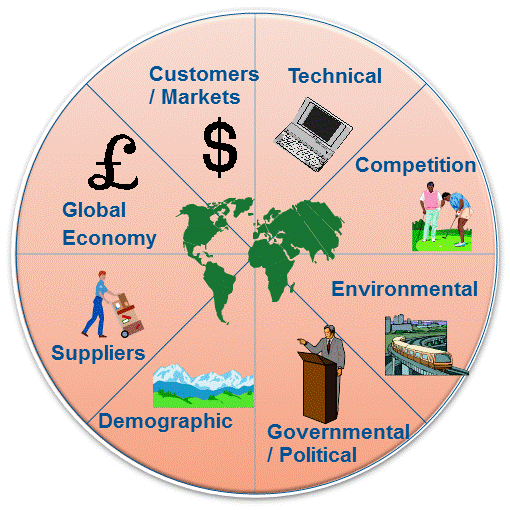 Last week I was running a workshop for a client organization and one of the modules was entitled “Managing Resistance to Change”. As Sourcing /Supply Chain professionals, we play the role of a consultant and as such we are constantly called upon to “manage” change within our organizations. I thought I would pass along some of the key points from our training.
Last week I was running a workshop for a client organization and one of the modules was entitled “Managing Resistance to Change”. As Sourcing /Supply Chain professionals, we play the role of a consultant and as such we are constantly called upon to “manage” change within our organizations. I thought I would pass along some of the key points from our training.
Here are two quotes from Jack Welsh that address the issue of change head on:
“Face reality as it is, not as it was or as you wish it to be.”
“If the rate of change on the outside exceeds the rate of change on the inside, the end is near.”
When we think about our world today, change is never-ending and comes from numerous sources:
As you can see we are bombarded by change every day and it feels like the pace of change is rapid. Regardless of the source or pace, there are predictable and inevitable responses to change. Here are a few things you might hear that indicate a resistance to change:
- We tried that before
- Our systems are different
- It costs too much
- That’s not my job
- We’re all too busy to do that
- There’s not enough help
- We’ve never done it before
- There’s not enough time
- That’s not our problem
- Why change it? It’s still working
- We’re not ready for that
- Sounds OK but impractical
- It can’t be done
Resistance from change often comes from fear – whether or not that fear is real or imagined. Here are some things people confronted with change often fear:
- Loss of credibility or reputation
- Lack of career / financial development
- Possible damage to key relationships
- Loss of employment
- Interpersonal rejection
- Change in job role
- Embarrassment/loss of self-esteem
- Job transfer/demotion
The truth about change is that:
- No matter how well motivated, an individual cannot make change happen alone
- The organization changes as the people within the organization change
- Members of organizations are as important as leaders in changing organizations
- It is slow, difficult and expensive
So now that we know how to detect it, what do we do about it? Consider a simple model:
The key at this point is to understand the various stages and the progression and to realize that people WILL go through ALL these stages.
Some mistakes change leaders make are:
- Attempt to rush people from one stage to the next – people have to go at their own pace – forcing movement will only increase the amount of time people will spend getting to true acceptance
- Underestimating the amount of emotional involvement, especially during the anger phase – people will tend to become very agitated and will show high emotional response
- Thinking everyone will move at the same rate – everyone is different – some people will go through the entire model in 48 hours. Others may take 480 hours. The important point is that all will eventually work through it if given the proper support.
For you to be a successful facilitator of change, you will need to first identify the stage a person is in and then respond appropriately. Doing so can help the person move at the best pace, whatever that happens to be. Let’s look at the milestones:
Denial : The person in denial will not admit that “this is really happening/going to happen”. This is the “it’s just another goofy idea from the ivory tower” stage. When you meet individuals in this stage, the key is to help them come to grips with the fact that the change will take place and they will have to deal with it.
The worst thing to do at this stage is to imply that “it won’t be that bad” or “it’s really not much of a change”. Change leaders have to admit the depth and breadth of the change so that people can work through their resistance with a realistic understanding of what the change will mean in the long run.
Anger: When people finally realize that the change won’t go away, they respond with anger. This is an emotionally charged response. You can expect a lot of verbal and physical expressions of that emotion. There is little you can do except let people work through their anger. If they have been given “the truth, the whole truth, and nothing but the truth” about the magnitude and impact of the change, they will be better off. In many cases, people get more angry about a change they think is trivial and that will, therefore, have little impact, than they do about changes that are obviously so large that the results will be worth the hassle.
Change leaders need to ensure that the anger is recognized as legitimate and does not become destructive. People can be angry so long as they control their response to that anger.
Bargaining: When people begin bargaining, the good news is that they have moved beyond the anger stage. The caution is that they may read far more into anything that is said in response to their bargaining efforts than was meant. For example, they may say something like, “We can’t possibly do this right now. We have too much at stake to take a chance on upsetting our suppliers.” A response that says, “You’re right. We have to be careful.”, will easily be interpreted to mean that they have successfully negotiated an end to the change effort. And, they will act accordingly.
The key to success is to understand what is going on and to stay true to the change effort. In the above example, the response should be, “Of course we have to ensure continuous supply. The program takes that into account. Next week we will kick off the project and we need your help to ensure that we do so.” That significantly reduces the possibility that they will read between the lines to find the answer they want.
Depression: When people find that their bargaining is not going to work, the next step is depression. A feeling of being overwhelmed and out of control leads them to drag their feet and do their work with little enthusiasm or effort. They will largely be “going through the motions.”
The most important approach here is to keep the energy up and get them moving. This is a point where small victories, easy tasks, etc. can be of great value in getting the person to re-engage with their job. For most people, this is the shortest stage of the resistance cycle. However, everyone is different. There are those who get caught in this stage and find it very difficult to move on. Again, specific actions, follow-up and praise for success make all the difference in the world.
Acceptance: The biggest challenge here is to spot those who get here early so that they can be given coaching on how to help others through the resistance cycle. The biggest problem of early acceptance is that those individuals can become a negative influence if they do not understand how to work with others who are going through the change cycle.
Here are a few tips on What NOT to do:
- Fight the resistance
- Take it personally
- Get hooked into the details
- Avoid the resistor
- Work primarily with your “allies”
- Lose your confidence
- Expect to have all of the answers
- Use aggressive language
- Expect approval, encouragement or support
Following some of the tips we have provided in helping your colleagues work through the stages of resistance really do work. Give them a try! By the way, you may see some of your own reactions / behaviors in this model as well, so use it as model to manage your own reaction to change.
Let us know what you think and join in the conversation . . . . . . .



3 Comments
Pingback: URL
Pingback: Don’t Shoot – The Messenger May be MORE Important than the Message! - News You Can Use
Pingback: An Unlikely Change Leader - News You Can Use